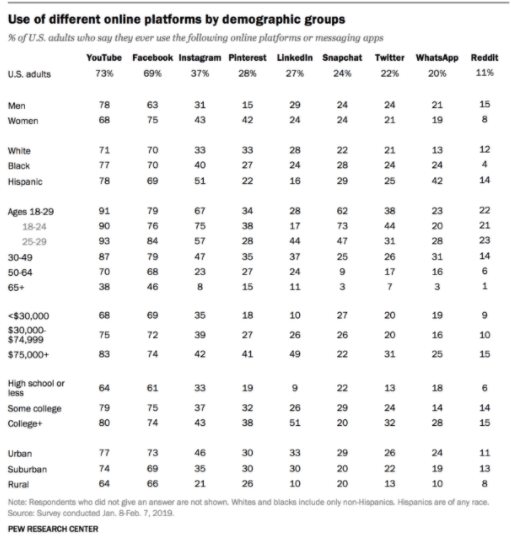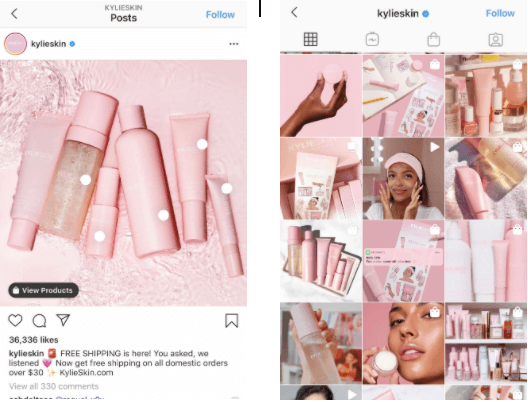When traipsing down Oxford Street, what are the main factors that influence your decision to set foot into one shop over another? Naturally, the answer is whether there is a Starbucks close by, if your iced coffee is running dangerously low. But that’s not quite what we’re getting at, sweetie. When it comes to businesses differentiating themselves from their competitors, the primary course of action is branding. As a consumer, there are several factors that make up your experience of a brand in-store – ranging from the design and colour scheme to even the smell of the outlet. But there are many other aspects of a brand that must be considered when contemplating how to build one. It’s not quite as simple as slapping a Monumental logo on a website, believe it or not.
As a digital marketing agency London, we may know a thing or two about how to establish a brand, so don’t be shy and contact us.
Table of Contents
What is the definition of branding?
There are many factors that come into building a brand, but in its essence, a brand is about more than just logos and monogram packaging. A brand is the way that a business is perceived by consumers. It is a business’ reputation. It is the most valuable asset of a company, as it both ensures customer loyalty and draws in new customers. According to SmallBizGenius, over 70% of brand managers consider building an audience more important than converting sales. Of course, a brand manager would say that, but you get the picture.
Of course, as with seemingly everything in the world of marketing, there is terminology that has been conjured up for this concept. It is known as brand equity. This is the measure of the perceived value of a brand by customers. Think about it, something is only really worth what someone is willing to pay for it – brand equity is this concept on a much larger scale.
If a business’ brand equity is high, then they will be able to charge a higher price for their goods – even if they may be the same standard as their competitors’.
Top factors that affect brand equity are:
- Brand loyalty – whether customers will keep buying from a brand.
- Brand association – what comes into customers heads when they think of a brand.
- Brand awareness – how wide of a reach a brand has; how many people wouldn’t say “b*tch, what?” if it was mentioned to them over brunch.
- Perceived quality – how much faith customers have that a brand will deliver a product or service of value to them.
How to Create a Brand
Once you have a grasp of what a brand is, there are some key basics you need to consider when you start to create your brand:
- Create a logo
Your logo will be an instant communication of your brand to your customers, so it’s important that it reflects your brand identity effectively. Settle on a design style to attract your audience; this may be classic symbolism and font, retro graphics or modern and minimalist, for example. Be sure to pay attention to colour – purple, for instance, indicates luxury while grey will achieve a more mature and serious look. Think of your logo as a punchy representation of your messaging.
- Colour palette
Selecting a colour palette is vital when it comes to attracting a certain audience segment to your brand. It doesn’t take a genius to figure out that to appeal to a female audience, pinks, purples and pastel colours are the way to go. Greens will work a treat for any brand connected to nature. Do some research into which colour combinations trigger which emotions in consumers and remember – stick to two or three, so as not to stray from a strong aesthetic. Take a leaf out of Karl Lagerfeld’s book – even simple monochrome can take you a long way.
- Tone of voice and personality
Now, this is crucial – take it from us sass queens at Monumental, darlings. A brand’s personality is reflected in the way that it communicates to its customers. In making sure that the tone of voice is consistent across advertising, social media and original content, customers will be reassured that they aren’t just buying from a faceless corporation.
- Unique selling point
Perhaps the most crucial of all these key points is to have a strong USP. Markets of all sectors are saturated with brands trying to prove that they deserve consumers’ money over the outlet next door. Through making sure that your brand is offering something unique, or at least a similar service/product in a unique way, there is an opportunity to thrive in your market sector.
- Target audience research
This one is staring you blank in the face, sweetie. You need to know who you’re selling to before you start flogging your wares! Make sure that you gather data on how similar products/services to yours perform in certain demographics. In doing this you will be able to develop long-term relationships with specific customers through providing solutions to issues that are directly relevant to them.
- Focus
Today’s commercial world is teeming with brands that emerge and then fade rapidly if they don’t have that thing it takes to survive. Focus is that thing – think of it as the manifestation of Gloria Gaynor’s I Will Survive. Akin to consistency, having a strong brand focus ensures customer loyalty because they trust that they will get what they want from your products/services. No brand can do it all, so saying ‘or’ rather than ‘and’ when making decisions will help your brand stay focused. Your resources will be spread too thinly if you try to do everything – cater to your chosen niche and concentrate efforts into perfecting that.
- Application across all of the business
All the elements of a brand should come together and be implemented throughout all aspects of the company. Whoever said less is more didn’t know branding like we do, darling. If your company provides services, then logos and colour schemes should be reflected in uniforms. This goes for product packing too, and digital content such as social media and marketing content. If a customer can’t immediately tell that something your company has produced is part of your brand, then you need to take a long look in the mirror.
Crucial Elements of Branding
Once you have established the above basics, you will be able to think about a vision, mission and set of objectives for your business. A brand not only allows you to communicate this to your customers, but allows you to better understand this internally within the company.
Here are some crucial elements to consider when building your brand:
- Cohesiveness
This concept is about as basic as a micro influencer’s outfit at Coachella; a brand must be consistent to maintain consumer loyalty. According to the statistic-riddled brains over at Yotpo, 36.5% of shoppers will spend more on products if they’re loyal to a brand. If a customer feels a sense of familiarity from your products, their packaging and the aesthetics of a website or outlet, for example, they will feel trust enough to spend more money.
When building your brand, you should ensure that there is cohesiveness across all its facets. This will be reflected in website design, social media channels, advertising, logos and online content. Why not begin, though, by establishing your content pillars and some basic aesthetics to maintain throughout the brand building process. Strong foundations are crucial when it comes to company branding. While 95% of organizations have brand guidelines, only a quarter are consistently enforced, according to Lucidpress. Continuing your strong foundations through your company’s branding will give you the edge over these competitors that are dropping the ball.
- Identifying a target market
The perception of your brand is valuable only to a specific group, the scale of which depends on your brand. For luxury branding, for example, a niche portion of the market must be reached. This is because a sense of exclusivity is important for some luxury brands, this is what keeps their brand equity so high.
Deciding whether your brand is going to strive to be a Beyonce, or be satisfied with being a Michelle will determine your target market. You can tailor your branding and content to satisfy this chosen customer base and build loyalty.
It’s also important to check out your competitors. Now, we all know it’s not healthy to compare too much… but a knowledge of who you’re up against is crucial. You may be able to find a niche that they are overlooking, or you might realise that a competitor has saturated a market and competing would be a waste of time.
Figuring out why a specific demographic has a need for your product/service is essential, but also who these people are. Think about age, location, gender, income level, education level, ethnic backgrounds etc. These will all help you tailor your branding to garner a recurring customer base.
Branding and Social Media
In today’s highly digitised world, one of the main channels through which you can cement a brand is social media. As a social media marketing agency, we at Monumental can attest to the importance of this. Social media platforms provide a chance to reach targeted audiences with curated content that can reinforce company branding.
It’s not just important to use social media to keep abreast of who happens to be Gigi Hadid’s latest squeeze – although this is obviously crucial in its own right. It’s really important to keep track of which audience segments are engaging with which kinds of content, as well which are using which platforms.

This is because the promotion of your brand will become a lot more effective once you know which audience segments are most likely to become valuable customers.
Social media platforms such as Instagram are highly visual which affords you the chance to cement the aesthetics of your brand. Logos, colour schemes and product designs should adorn your brand’s account, ensuring that the social media presence of your company is a familiar hub for customers to engage with. The same goes for platforms such as Twitter that are more text-based. This isn’t just beneficial for 12 year olds complaining about the latest Drag Race elimination. This is great for enforcing the tone of voice and messaging behind your brand. According to Semrush, 65% of customers in their survey said that customers feel emotionally connected to a brand if they feel like it cares about them. This is why written communication via social media is important; a sense of personality behind the brand will build trust.
An example of great branding
A great example of establishing a brand well, particularly on social media, can be seen in Kylie Jenner’s skincare line Kylie Skin.

As can be plainly seen, the packaging, social media feed and logos all have a sense of cohesiveness in their aesthetic. Obviously their main target audience is female, and the colours and female-focused content on the account reflects that.
As the minds over at SmallBizGenius found, colour improves brand recognition by up to 80%. Kylie Skin nailed this; they don’t just wear pink on Wednesdays, put it that way.
With a complete skincare bundle priced at £59.99, the mid-high price range is reflected in the elements of luxury seen in the packaging, such as matte finish and minimalism. Kylie Jenner isn’t just a pretty face, she knows what she’s doing. She took advantage of the brand equity that already exists for Kylie Cosmetics and ported it over to this sister brand. The girls trust Kylie, so they trust Kylie Skin.
We hope you’ve been thoroughly enlightened by our delving into how to create a brand. If you enjoyed this article then queen, don’t stop here. Check out our article, Content Hub: The Facts, to get the 411 on how content hubs will benefit your marketing strategy.

